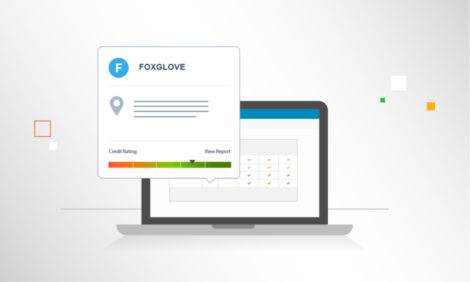
Credit scores revealed: How a credit score helps you get paid

The number of insolvencies in Australia continues to rise year by year. The most frequently cited causes are cash flow issues, poor strategic management and trading losses. For each one of those businesses, there would have been warning signs in the lead-up to failure. That’s if – you knew where to look and how to utilise a credit score.
Credit scores: powering better business decisions
Banks have used credit scores for many years to form the basis of credit and lending decisions. But now the information can be in your hands too.
A credit score is a useful tool that can give you valuable insights into your customer’s business. It can also alert you to certain warning signs or areas of concern. You can also use a business credit score to improve your access to credit and grow your business.
A commercial credit score ranges from -200 up to 1200. Generally, the higher the score, the better a prospect looks to a lender.
How to calculate a commercial credit score
A commercial credit score is calculated based on the information held on the business credit file at a given time.
Your credit report contains information from many sources. It takes into account commercial credit defaults and other debts and public record information. Additionally it includes court judgements, writs, directorship details, proprietorship details and invoice payment history.
Predictive modeling and advanced technology find patterns in the data. A complex algorithm developed by Equifax’s (formerly Veda) scoring team filters this data. This algorithm determines the likelihood a business/company will record an adverse event on their credit file within the next year. A score of 200 represents a 50% chance the entity will experience an adverse event.
An adverse event on a credit file means something that could negatively impact a company’s ability to repay their debt obligations. There are many examples of adverse events such as a default, going into external administration or bankruptcy. Furthermore having a collections action or any court actions related to outstanding debts are also considered adverse events.
The information used to predict the future
Equifax’s credit reports monitor these patterns of late payment for an in-depth payment history picture of your new customer.
Equifax collects these patterns from a network of over 200 suppliers representing a cross-section of industries. These industries include business-critical services such as telecommunications, utility, transport and food services.
Professionals and businesses tend to prioritise these payments in order to operate. Consequently a late payment among these industries can be a strong indication of financial strain.
How in-depth is the credit score payment-history picture?
Over the last two years, Equifax has collected over 22 million trade references (i.e. financial references against a company). Every month Equifax updates 2.5 million references. This level of detail paints a up-to-date, widespread picture of trends, company habits and payments made outside of set terms.
One score to give you power
Reviewing a business customer’s credit score and credit report helps you avoid being unprepared. If you can foresee signs of financial distress, you can have proper processes in place to keep your business safe.
If a company is indicating a risk of insolvency, that doesn’t necessarily mean other organisations shouldn’t do business with them. It is just important to go into these relationships with their eyes open.
With increasing insolvency statistics, the Equifax business credit score will help you ensure payment terms are still appropriate to safeguard your cash flow.
Contacts lookup in Xero
Getting transparency around your customer is simple for Xero customers.
The Contacts lookup in Xero aims to reduce data entry, eradicate typos and make adding new contacts in Xero much easier. With this capability you will get a suggestion on the business you’re looking to create and will auto-populate their information. The information includes business name, address, ABN/NZBN, industry classification and a credit risk indicator. A credit risk indicator predicts the likelihood of a business or company failing within the next 12 months. Additionally in one easy step you can go to Equifax’s SwiftCheck site and purchase a commercial credit report.
Damien Stevens is Equifax’s Senior Product Manager for Commercial Risk. He is well versed in assisting businesses use insights from data to make well informed decisions.
The post Credit scores revealed: How a credit score helps you get paid appeared first on Xero Blog.
Source: Xero Blog






